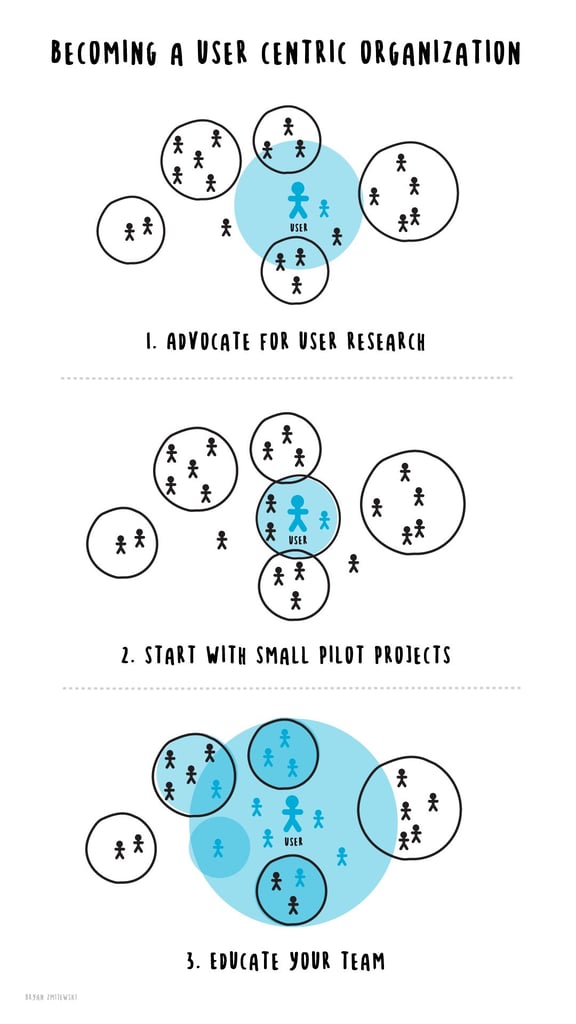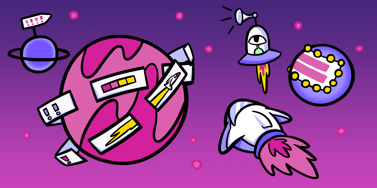“If you can get 1% better each day for one year, you’ll end up 37 times better by the time you’re done.” This quote from James Clear’s Atomic Habits is meant to apply to an individual, but it also embodies the spirit behind the benefits of continuous research for organizations.
Continuous research (or ongoing research) is an important part of maintaining a great customer experience because it enables an iterative approach to closing the customer gap. Ongoing listening methods like NPS surveys, user analytics, continuous customer interviews help keep your product useful, relevant, and valuable to users. Here are a few benefits of continuous research:
- Eliminate your assumptions in product decision-making: Continuous research dismantles the need for assumptions in product decision-making, replacing guesswork with rapid insights.
- Keep products in sync with user needs: Continuous research allows you to track and respond to evolving user needs, ensuring products remain in-tune with the dynamic demands of the market.
- Validate your concepts before development: Conducting continuous research allows you to validate concepts before development, mitigating risks and optimizing resources for the creation of successful and well-received products.
- Create more satisfying user experiences: By integrating insights from ongoing research, you can tailor user experiences to meet and exceed expectations, fostering satisfaction and loyalty among their target audience.
- Make more effective decisions company-wide: Leveraging the outcomes of continuous research not only refines product-related choices but extends to a broader spectrum, enabling more effective and informed decision-making throughout the entire company.
This article will focus on the mindsets needed to adopt continuous learning in your organization. It’s a cultural shift. Your people must embrace these ideas and challenge themselves to think differently in order for continuous research to work and be effective.
Development is Never Done. Neither is Learning.
Customer needs will evolve with your product. If we embrace a culture of continuous learning, we can discover what our customers will do or need as things change in their organization.
In the video below, watch Jeff Gothelf explain how to scale lean by embracing a mindset of continuous learning.
Geoff explains, “When you take the concepts behind lean startup, you start to build a practice of continuous learning. At the core of continuous learning is experimentation and humility. There is a requirement to have a humble mindset.”
“If you work in a startup, it’s experiment or die. Making the wrong decisions a couple times in a row, you’re done. Big companies have large piles of money, and with that scale comes great responsibility. You have a seemingly endless runway and access to resources. However, most organizations assume they already know everything. As a result, they keep spinning wheels on features.”
Failure is Part of a Process.
“You miss 100% of the shots you never take.” — Wayne Gretzy
When you find something that works, it can be good. But when you eliminate what doesn’t work, it gets you closer to excellence. With continuous learning, there will be many failures along the way—a sign of progress. This graphic by Michelle Rial illustrates how, without failure, success is not possible.

Unfortunately, the struggle of dealing with failure can be hard on people. So much so, that the default state is not to try. Paralyzed by fear, people do not feel comfortable trying something new. “What if I lose my job? What if I miss out on that promotion or raise?”
UX researchers often highlight why particular product solutions don’t work. This happens regularly as part of the process. It’s no surprise that apathy, avoidance, neglect, anger, and hostility within an organization are so frequent in research activities.
Simply framing failure in a different light can go a long way to building the organizational health needed to embrace a culture of continuous learning.
Know When to Quit, and When to Survive the Dip
When there is a dip in success, it can be confusing. It’s a quit or keep going moment.
Seth Godin has a great book on this called the dip where he explains the decision to quit or not is a simple evaluation: Is the pain of the Dip worth the benefit of the light at the end of the tunnel?
To be a superstar, you must do something exceptional. Not just survive the Dip, but use the Dip as an opportunity to create something so extraordinary that people can’t help but talk about it, recommend it, and choose it.
Quitting as a short-term strategy is a bad idea. Quitting for the long term is an excellent idea because it frees you up to excel at something else.

Start With Small Projects, Then Educate Your Team
You don’t become a user-centric organization overnight.
Whether you are a product manager, design leader, or VP, initiating change starts with acknowledging that bringing customer voices into your product process and management will help your team. The illustration below shows three ways to pick up some momentum with a user-centric vision:

Advocate for Continuous Research
First, assemble a compelling narrative for the stakeholders. This could involve gathering evidence on how continuous research has led to success in similar organizations, backed by solid metrics like improved user retention, increased revenue, or enhanced customer satisfaction. Then, propose a structured plan for incorporating continuous research from the outset of the product life cycle. This should illustrate the continuous loop of feedback and iteration, emphasizing how early insights can avert costly reworks later. A one-pager is enough.
Start Small With Pilot Projects
Identify a project with a scope that’s manageable yet significant enough to showcase the benefits of continuous research. It could be a feature enhancement or a new product line with a substantial user base. Implement different research methods, track behavior and feedback changes pre- and post-integration, and measure the results against KPIs. The positive outcomes will speak for themselves, offering a persuasive argument for scaling up continuous research.
Educate Your Team
Adopting continuous research across your organization is as much about mindset as methodology. Workshop these ideas into your product and design reviews focusing on empathetic design thinking and data-informed user experience. You can regularly share user insights, testimonials, and analytics with your team in the presentations. Get your design and product team to highlight the correlation between user happiness and our success. Create a culture where every team member is encouraged to think from the user’s perspective, making users an intrinsic part of your product development ethos.
By starting in these three areas, you can progressively steer your team and the broader organization towards a more user-centric approach, building products that resonate deeply with your users’ needs and aspirations.
Continuous Research Example: Iterative Testing vs Launch
The benefits of continuous research are best seen in small, iterative releases rather than trying to mitigate a launch failure. In the world of research and design, these stress-inducing events test the validity of UX research findings and design choices. They also produce very different testing results.
First, what’s the difference between the two?
🔘 A Release = pushing code to production. This can be as small as a bug fix or as big as a new game-changing product.
🚀 A Launch = a go-to-market event that brings value to your customers and business.
People use user testing in these two distinct processes, but one yields successful learning outcomes, while the other tends to generate anxiety.

Iterative user testing produces compounded learning. An iterative release approach takes organizational discipline, but the learnings strengthen your team’s ability to adjust and overcome roadblocks before a launch.
Leaving all your testing before a launch may reduce perceived risks, but the learnings can’t be applied quickly. This approach may dishearten teams that see the testing as a scorecard.
Helio: Your Key to Continuous Research
Enable a continuous learning mindset within your organization. With Helio, you can quickly test prototypes, homepage content, landing pages, and much, much more. Without the pain of putting in a ticket with the research team, people who work in product, marketing or design can run small test surveys to validate their hunches and ideas. Research should take days, not months.

Learn more about how Helio can amplify continuous learning and discovery for your website or product. Speak with an expert or book a demo today.



